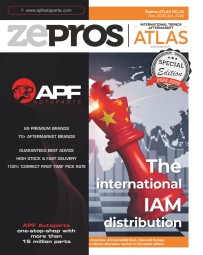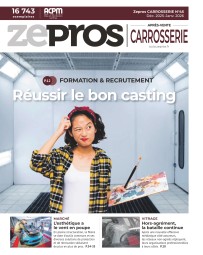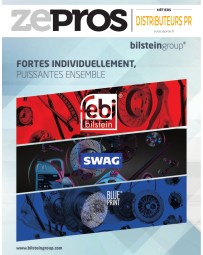
Are private labels the inevitable future for automobile parts? (1/2)

The pandemic and geopolitical disruptions, particularly in China, have disrupted supply chains and production, leading to an unexpected boost for A-brand parts. Shortages have increased the demand and prices of locally produced, often more expensive, parts. However, the underlying trends still point towards the rise of private labels.
Embracing the crises! The entire automotive after-sales ecosystem emerged positively from the challenges of 2021 and 2022. In the OEM sector, component and new vehicle shortages created a supply crisis, putting an end to the price war and revitalizing the value of consumer and trade sales. Despite a decline in sales, manufacturers and their suppliers achieved impressive financial results, compensating for the volume drops experienced by parts manufacturers.
Spare parts distributors initially experienced a similar euphoria. The shortages in 2021, coupled with inflation, allowed the sector to rely on existing stocks and witnessed an increase in their value. This occurred while they were able to pass on the aftermarket price hikes from manufacturers who were compelled to promote their premium brands manufactured in Western factories.
Opportune times for private labels
To combat global inflation, central banks raised their base rates and desynchronised price increases and wage hikes to halt the inflationary spiral. It seems to be on the verge of being curbed: the IMF has just reported a decrease in inflation from 8.7% in 2022 to 6.9% in 2023, with a projection of 5.8% in 2024.
However, this comes at the cost of a likely lasting decline in purchasing power, putting an end to opportunistic profits. Premium parts, already seen as expensive, have an additional drawback compared to labour costs: their price increases are highly visible, especially because discounts, on leading online sales platforms that favour premium brands, are easy to find.
This trend reversal dates to the end of 2022 when garages worldwide began to sound the alarm in response to consumer pressure. Workshops then started showing a real interest in private labels, which until then had been reserved for a sometimes-marginal share of parts sales in growing Western markets.
Private labels are becoming more bankable than ever, even in rich countries that traditionally favour premium brands. GFK research notes for 2023 that in the mass consumer market, major agri-food brands are declining by 7%, while private labels are up by 4%. In the spare parts industry, the trend is even clearer. Private label products accounted for only 10 to 15% of parts sales before the crisis but have now reached 25%, or even 30%.
Narrow margins for manoeuvre
Major International Warehouse Distributors, such as GPC/AAG, LKQ and PHE, have aggressively promoted their private label offerings, sometimes without much care, as Alliance Automotive Group does in Europe for NAPA, the private brand of its shareholder GPC. GPC aims to make NAPA a dominant brand, if not ultra-dominant like in the United States, at least on a global scale.
While Chinese, Eastern European, and Turkish factories have regained momentum, distributors must exercise caution with such a strategy, as it can quickly become detrimental. There are high risks of sacrificing a better option for a worse one. Lowering prices by 20% to 30% may help maintain volumes, but it comes at the expense of precious margins. Distributors may hope to improve their purchasing margins by closely aligning with the upstream sourcing of manufacturers. However, this strategy might not fully offset the declines in margins caused by the highly competitive resale prices of private labels.
To prevent adverse impacts on results, private labels need to achieve sales volumes much higher than those of the premium parts they replace. Additionally, parts manufacturers are aware of the potential threat and are making efforts, with varying success, to counter this trend (read the article "Private labels: Counterattacks from premium parts manufacturers").
Private labels, the response to a variety of developments
Choosing this path, whether delicately or not, is imperative. Numerous structural factors strongly favour these private brands. The aging of the vehicle fleet is a primary factor, necessitating parts prices aligned with the diminishing market value of the vehicle. This aging process is notably hastened by the decline in new car sales resulting from consumer economic choices.
And private labels represent a durable aspect of the ongoing urban transformation of the car. Why invest in a car when its role is diminishing in significance within these expansive metropolises, where alternative mobility solutions are flourishing? Considering that 68% of the global population is projected to reside in urban areas by 2050, this poses a significant quandary for manufacturers heavily reliant on new car sales from affluent urban demographics.
Private labels are intricately linked to the evolution of fleet sales
The modern consumer, opting against ownership, is increasingly turning to long-term rentals. Company fleets have gained strategic significance, emerging as the predominant source in new car sales in affluent nations. Beyond corporations, which initially propelled fleet sales, individuals are now adopting a mindset that shifts from traditional car ownership to a more rational use model—the concept of usership over ownership.
Where do private labels sit within this evolving landscape? They align with the "multicycle" considerations among long-term rental or leasing entities. In essence, instead of outright selling their fleets after the initial rental cycle, rental companies are contemplating sustained ownership. This allows them to re-rent vehicles multiple times, enabling individuals with intermediate or modest incomes to access a car without significant financial strain.
Navigating the maintenance and repair aspect of the crucial "total cost of ownership" equation, fleet managers have a pragmatic approach. They recognise that while a new car may legitimately require original or equivalent quality parts, often premium, during its initial rental cycle of three or four years, private labels—with well-understood intrinsic qualities—offer substantial cost reduction opportunities.
A global competition among various stakeholders is looming in the realm of fleet customers. Traditional rental companies, banks, insurance providers, manufacturers, new car dealers, parts and preparation networks—all are set to engage in this war. This narrative is one we will revisit. However, for private labels, it is already intertwined with their long-term destiny.
Retrouvez la version en Français : La MDD, avenir incontournable de la pièce ?






